Your Cart is Empty
spend R1000. 2kg or less. free shipping.
Menu

spend R1000. 2kg or less. free shipping.
bonsai
gardening
Orchids
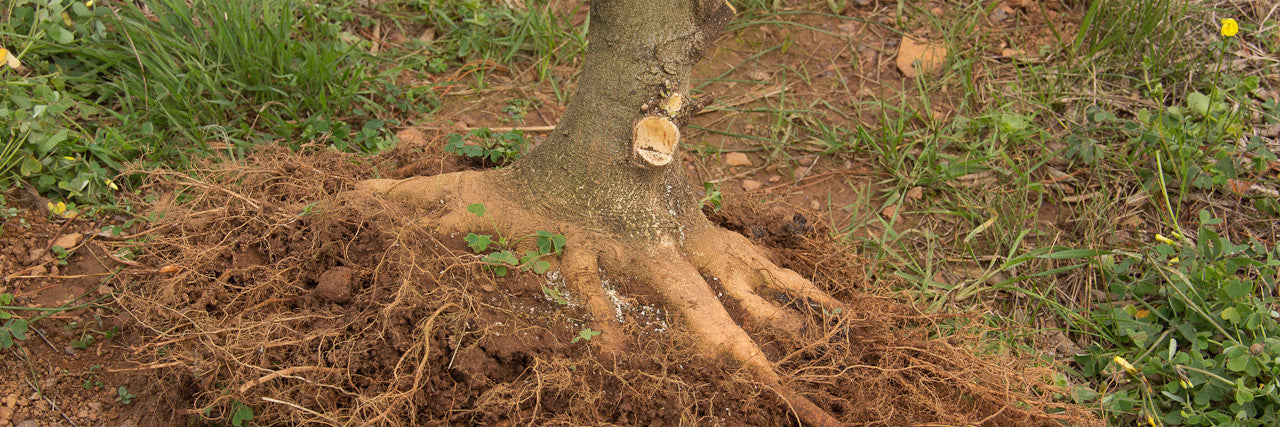
Field growing bonsai trees
8 min read
Field growing is one of the techniques by which you can rapidly attain thick, tapering trunks with which to develop quality bonsai trees.
What is so important about a thick trunk you might ask. After seeing so many sticks in bonsai pots I would say its extremely important. You should keep in mind that as bonsai artists we are trying to create nature in miniature. Trying to capture and recreate the feeling you get when you stand in front of an old oak, an ancient camphor tree or a milkwood bent over from years of abuse by the wind you will notice with all of them they have fascinating trunks. The way they grasp the soil and how they stretch up into the heavens is a challenge to replicate in a small pot to say the least! So we need to use every visual device we have at our disposal. A thick, tapering trunk helps a lot. Does every trunk need to be thick? No. Sometimes a more feminine approach is required such as when styling Japanese maples. However we still require taper in the trunk to create visual interest and to recreate how the tree becomes thinner as it reaches up into the upper reaches of the canopy.
Field growing is not the only technique which can be used to create thick trunks, one can also use large wooden or plastic containers. For growers who live in a rented house, don't have access to much garden or for some other reason cannot use field growing, this will be the next best option. If you are limited to large containers then I would highly suggest our Professional growing medium. As its fast draining, loose and will result in rapid root and vegetative growth. BonsaiBoostwill be vital to ensure the tree grows healthy and strong during the period, or it will take longer to achieve the desired results.
However without a doubt, trees grow best when they are in the ground. For centuries this is how top quality trees of all species have been developed in Japan, and this approach is still practiced today.
Image caption. Hackberry trunk being developed in the ground. Notice the bags of BonsaiBoost.
The Hackberry above was developed from a one year old seedling treated as a cutting after the taproot was removed (To learn more about starting bonsai from seed purchase my e-book). The finer roots were spread out and the tree was planted in a plastic container for two years or three. In the fourth year field growing was started by planting the tree out into the ground.
Image caption. A brick growing bed, back filled with ideal growing medium
If you have the space you can build growing beds like these above. They are built from brick which create a void you can fill with ideal growing medium, which should be fast draining. This elevation of the soil level makes life a lot easier, especially on your back, when you are working low down on the trees.
Be sure to provide sufficient space between trees so their branches can develop as long as possible. The longer the branches become the more and quicker they will increase the girth of the tree. In the right growing conditions your trees may put on at least 1m of growth per year.
Image caption. Old slate tiles used to plant onto.
I have used tiles in my field growing for the following reasons:
- It makes it easier to remove the tree from the ground as you don't need to dig underneath the tree. Just find the edge of the tile and chop the roots off there. Once these are severed you can simply lift the tree up. Easy peezy!
- Tiles force the trees roots to grow horizontally instead of vertically down. This creates a very nice flare at the base of the trunk as the roots develop which gives a lot of character to the trunk.
If you don't have ceramic tiles you can use wooden boards or plastic sheets and even styrene, but tiles are more durable and you will be able to use them repeatedly.
Image caption. Mounding soil onto the tile
Mound some soil onto the tile. It does not have to be much, just enough really for the tree to have something to grow into.
Image caption. Placing the tree onto the tile
Place your prepared tree on top of the mound of soil. Work some soil into any gaps so that there are no voids. Roots will not grow into large pockets of air so you must be sure to eliminate them.
Mound some soil on the top and if you like you can mulch around the base also to ensure the soil does not dry out completely between waterings.
Image caption. Completed planting of a grove of trees
In the image above you can see several trees which have been planted in this manner. There is about 1m between them as they are quite developed trees already.
The trees are at their most vulnerable at this stage due to the fact that you have eliminated such a large amount of roots. Field grown trees have a lot more energy though than pot grown trees so species such as Chinese maple and Hackberry can take the harsh treatment with ease. Trees which are more fragile should be given more careful aftercare, including frequent light watering.
Hold off on fertilizer at first but after the tree has settled in and is showing sure signs of new growth you may go ahead and fertilize. Organic, slow release fertilizers are advisable as they cannot easily burn the sensitive new roots.
Development in the first year after planting the tree will not be very impressive but in the 2nd season it will greatly accelerate. In the subsequent years growth will speed up even further until in around the 4th year you will dig the trees up once again. During this time, emphasis should be on developing the branches and trunk line which means allowing growth to extend as long as possible. The longer the sacrifice branches become the more they will thicken the trunk.
Each time you lift the tree you will cut back the sacrifice branches and reduce the height of the tree, called a trunk chop. When you do the trunk chop it's not so important to make the cut at a particular angle and it's certainly not necessary to shape it. The fact is that the tree will die back to a point and from there it will issue new growth. So it is rather pointless to shape the cut only to have to repeat the process again in a year or two, at the point where the new trunkline has started. I know many books show this but I have learnt from experience that it's simply a waste of time, but it does sound like an excellent idea which makes it very believable.
Image caption. Field grown Chinese Maple. You can clearly see the three points along the trunk where it was chopped and then development continued again. Here I am preparing it to go into a wooden box I prepared for it.
The height of the trunk chop is dependent on:
- how large you want the tree to ultimately become (If you want a short, stocky tree where you make the trunk chop will be different than when you want a tall, feminine trunk)
- how many curves you want in it (Each time you make a trunk chop you change the direction of the trunk.)
- and how thick you want the tree to be. (You don't want to cut the trunk until it has thickened sufficiently)
Don't chop the trunk until the part which remains is at least 2/3rd's or more the final thickness you want. Very broadly speaking you might want to make your first trunk chop at about 1/3rd of the final height of the tree, but this is really dependent on what style you are creating.
As you draw closer to the end of the process ie the trunk has the girth you desire, you might decide to shorten the time the trunk is growing in the ground before you dig it up and prune. The reason for this is because you also now need to consider any scars and cuts you make, as once the tree is in a bonsai container the large scars created during field growing will be almost impossible to get rid of. I would suggest allowing branches to develop just a little further along the trunk, above any major cut. This will cause sap to flow aggressively at that area and will result in quicker healing.
To avert large scars in the latter stages of trunk development you might also remove branches before they get too large, reducing the size of the resulting cut. It is also imperative that you use a sharp saw to make any cuts with as this will result in quicker healing.
After removing the branch with the saw I find that using a root cutter is best for removing the remaining branch stub, as it is a hardier tool than a branch cutter.
Sealing the cuts is also strongly advised.
Image caption. Typical roots when practicing field growing
While in the ground the tree will grow strongly and roots will develop equally as strong. After several years in the ground the roots will have thickened considerably and will be very coarse. Feeder roots which are fine and can collect nutrients and moisture from the soil is what we need to encourage for pot cultivation, not the thick storage roots. You will also find that trees which remain for many years in the ground will only have these thick roots with the finer roots having died off closer to the trunk.
So every 3 or 4 years it is advisable to dig up the tree and remove the coarse roots. To do this I use a chainsaw and root cutters.
A good quality root cutter is an indispensable tool for field growing of bonsai trees as it can be used for reducing roots and stubs of branches.
To encourage feeder root development the tree should spend a season in a large plastic or wooden container. While in this container growth will be slower and more controlled. Fine roots will be issued by the tree from the thick roots which you cut when you last lifted it from the ground, but they will also emerge from the base of the trunk.
Image caption. After trimming the roots
The above image is of a Hackberry which was growing in one of my beds for a number of years. You can see how severely the roots can be cut back on field growing stock, due to the energy levels they would have built up. Its important that these root cuts be made, if at all possible, at the correct angle. The angle which is preferred is horizontal. The reason for this is that when the new roots emerge from the cut edges there will eventually be no visible scarring as the scar is essentially underneath the tree. If on the other hand you make the cut at a 45 or so degree angle, it will take many years for the cut to disappear entirely.
You will also note the large cuts created when I removed branches which were used to thicken the trunk. These should be sealed properly to prevent the live cambium/plant tissue from dying back at the edges creating an even bigger area to be healed. As you get closer to finally ending the field growing process you should focus more on these cuts healing over because once in a bonsai pot this healing will be a lot less.
Branches which developed during field are mostly useless once you begin styling the tree. Its very tempting to keep them many times, but they are generally too thick, too straight and have too little taper to be of any use. So it's best to start with a clean trunk and develop the branches you want to keep in the final tree, while you can control their growth better.
Image caption. Developing finer roots in a container
Here is another celtis which was developed in the ground for some years. Its in a large plastic container where it can develop many fine roots before returning to the ground for further trunk development after a season or so.
Check out my Youtube channel for more information!
23 Responses
Lee
March 03, 2018
Hi Terry. In regards to fine root growing, is using a pot or bowl with fine holes planted in the ground a good idea? I presume though that you will lose the spread out nebri with this method?
Terence Erasmus
October 07, 2017
Hi John. I am going to have to be more careful about what I write! I would never flatter myself in thinking that someone would read what I write so carefully. But seriously, I do make every effort to check what I say and I write from experience so I am fairly safe I think. To answer your question, yes, you can read this blog https://www.bonsaitree.co.za/blogs/tree-talk/seasonal-work-on-an-upright-hackberry This was one of these trees, developed in the same manner and lifted a few years ago and developed further in a pot. I am afraid that I do not have a proper solution for the scarring yet if you allow your sacrifice branches to get really large. You need to allow for most of the healing to occur in the ground, as the moment you put the tree in a pot the healing is minimal. You could carve also, but I am not a huge fan of carving on deciduous if I can find another way. I will be visiting some Celtis masters in Taiwan next month and talking them about scarring is top of my list. Whatever I learn will be shared of course. Thanks for reading.
John
October 07, 2017
I read…..and re-read….your posts a lot. The trunks are fabulous. I have a nagging question in my head though. What happens to trunks like this….as growth happens? Do you happen to have any progressions….images showing further direction?
Terry Erasmus
July 17, 2017
Hi John, thanks for the questions.
1. The best time to do a trunk chop would be in late spring when the leaves have hardened off. The tree has a lot of energy to bud back and there is sufficient time for this new growth to mature before your winter. Having said that my planning has never been just right and I have almost always, to my memory, done the trunk chop and root work at the same time – as you said at bud swell. I do get back budding. Absolutely agree, hold off on root work till typical repotting time. So sounds like I am recommending approach #2. Fertilizing well is a great idea to prepare the trees.
I would suggest a year in a box, for reasons explained in this series. The year after that you can put back into the ground if you are wanting to develop the trunk further.
I would never pretend to be an authority but I would never write about something I myself have not tried and tested. I have never lost a tree in 15 years using these techniques and I have not withheld any information from this series of blog posts on the subject. However, you have asked me to comment on Celtis, which is what I have done. If we were talking about other species then perhaps a more cautious approach would be advisable.
Hope this answers your questions John, but if not please just ask again.
John
July 16, 2017
Hi Terry,
You have the Celtis Sinensis Hackberry experience. I have the questions….and trees growing in the ground. Here’s what I wonder.
Background. Celtis Sinensis, Hackberry, ground growing for the last three years. The tree spent the first years as a twig growing up in a nursery pot. Now, at the soil level, the trunki is 4.5"-5" (11.43cm – 12.7cm). Healthy. Growing on tiles. About 10’ (305 cm) tall right now. My plan is to chop the trunk to about 10" (25.4cm) to a branch of good diameter that is growing in the right direction. I need to hard prune roots like you do also. I’m looking forward to this after reading your blogs. However….I am wondering about timing. Unlike you though, I have winter starting in about four months….end of November….my growing season ends in October really and doesn’t start back up until the end of March.
1. Should I chop the trunk right now while still in the middle summer growing period? ….and leave the roots along right now. Just chop the trunk only and nurture new growth. Hold off hard cutting roots until bud swell in Spring 2018? After that root pruning either put the trunk in a wooden grow box? Or back in the ground? ….this would all set up growth during the 2018 season.
Or.
2. Just let the trees grow this season. Water. Fertilize. Let is grow. Then in Spring 2018 chop the trunk at bud swell. Dig the trees up for root pruning. Hard prune the roots like you’ve demonstrated. Do it all at the same time. Then either put the trunk in a wooden grow box? Or back in the ground?
My confusion of timing is likely from reading and hearing people say one severe activity at a time…during a season. I still have time for the trees to grow yet this season….but need to make a decision right away for that continued growth.
What do you think? I appreciate your guidance.
Terry
May 24, 2016
Hi John for branches I cut them off and do try to hollow them out a bit. If you have a spherical cutter big enough thats great cause you can use that then. Of course one needs to seal well too. The apex though is a little different. I cut it a little further on than I really want it to be as I expect some dieback. Until a new apex is clear (new shoot) i would not bother with hollowing anything as its just a waste of time. If you leave the collar on then the wound will be proud of the surrounding surface. This is not necessarily such a bad thing and can actually give character to the trunk, however it will take longer to heal. Yes, once the branches have served their purpose then they can be removed, or if they have become really large and you are getting closer to finally lifting the tree (So in other words you want all these field scars to be minimized). I have seen a technique which I have not personally tried but which makes a lot of sense to me; instead of removing a thick branch all at once cut a wedge out of it so that the sapflow which remains flowing into the remainder of the branch can at least begin to heal the first part of the scar. After another year or more you can remove the remainder of the branch. I’d like to try this on a few trees when I next lift them.
Regards, Terry
John T
May 22, 2016
Further questioning on Hackberry branch cutting.
1. When you cut your branches off, at the time of lifting from the ground, do you reccomend the use of a spherical knob cutter?
2. Should I be carving into the trunk on Hackberry to create a bowl shape for the healing or closing of the wound by the tree?
3. Do you leave the branch collar on and not-cut off or do you remove the branch collar?
Generally, these would be branches just left to grow for the trunk thickening process. This branch removal would be performed when the trunk is removed from the ground and pruned for placement in a box for the next stage of root growth you discussed.
Thanks.
Sean
April 27, 2016
Thanks for reading and for the comments Sean. Not sure if there has been any misunderstanding but regards your comments on finding balance, what I do is simply allow the tree to grow for the 3 or 4 years without any cutting (maybe eliminate some branches if there are multiple ones coming out at the same spot). After that period I cut everything, the trunk chop and roots. So I have automatically got balance. Then I grow for a season in a container to encourage more feeder roots again. Then back in the ground. The problem with leaving the tree to grow much longer than this without cutting will be the scars you will be left to deal with. So I believe my answer to your question is that I don’t leave any branches and as I cut all the roots, the tree is in balance. As the trees energy increases again it will push out new branches again, which it will be able to sustain as it will not issue more roots than what it can sustain. Usually the first year after this treatment, growth is pretty slow.
sean
April 26, 2016
Well written and organized. I’m also learning and appreciate the information. I have crab apples, white oaks and plums I have been field growing for the past 4-5 yrs all between 1-2 inches in diameter. I live in Maine and my trees get 5-6 hrs of direct sunlight, growing relatively slowly to a height of 6-8 ft. The saplings with multiple roots were originally planted over tiles and saplings with a single root were planted with tourniquets.
I’ve been trying to maintain balance between roots and top branches as you mention whenever I prune roots, there doesn’t seem to be much info on this balance. Could you please provide some information or clarification as to the negative impacts or benefits to leaving branches above desired branch trunk chop location when pruning roots heavily versus lightly? . Does this mean that if roots are thick, without feeder roots, it is best to remove all top branches. However if feeder roots exist, leaving some top branches is beneficial?
Also, Spring came early in Maine this Year and buds are starting to swell. Is it too late to prune roots this Spring?
Sean
April 26, 2016
Well written and organized. I’m also learning and appreciate the information. I have crab apples, white oaks and plums I have been field growing for the past 4-5 yrs all between 1-2 inches in diameter. I live in Maine and my trees get 5-6 hrs of direct sunlight, growing relatively slowly to a height of 6-8 ft. The saplings with multiple roots were originally planted over tiles and saplings with a single root were planted with tourniquets.
I’ve been trying to maintain balance between roots and top branches as you mention whenever I prune roots, there doesn’t seem to be much info on this balance. Could you please provide some information or clarification as to the negative impacts or benefits to leaving branches above desired branch trunk chop location when pruning roots heavily versus lightly? . Does this mean that if roots are thick, with feeder roots, it is best to remove all top branches. However if feeder roots exist, leaving some top branches is beneficial?
Also, Spring came early in Maine this Year and buds are starting to swell. Is it too late to prune roots this Spring?
John T
January 22, 2016
Thanks Terry….for a lot of excellent knowledge shared in these articles. You gave me a great deal to think about before Spring happens. I now have an excellent approach to take as I plan actions for my ground growing trees. I have a renewed confidence as this is a Spring to examine the roots. I enjoy your detailed, photo supported, conversation….I hope my talents and skills match my thoughts.
Terry
January 22, 2016
Hi John. Thanks for the follow up questions. Answers as follows:
1. Yes.
2. Uhm, is this an actual situation or a hypothetical. I generally find only large roots close to the trunk after several years in the ground. If you did find such a root I would still cut it or the tree will perhaps utilize only those roots and not issue or issue very few new roots from the ones which were cut. Good question though.
3. Yes and no. Roots will thicken to some degree in a pot but the timeframe is MUCH longer than when in the ground as they can run unrestricted when in the ground but are limited in a pot.
4. If they do it will be negligible. They thicken mostly when in the ground. The sole purpose for transferring the tree at stages to a container is to get the tree to issue new roots both from the trunk and from the cut field roots. If you don’t do this then you will simply end up with a handful of really thick roots with big gaps between them.
John T
January 22, 2016
Thanks for the reply Terry. I have follow-up related questions about the roots of the trees moving from ground to container to back to the ground and so on.
Assume the Hackberry and American Elm trees are growing well. The trunk is not yet at a desired thickness. It is time to dig it up, hard prune the roots and grow it in a container for the next season….then back to the ground. Now the questions:
1. Does hard pruning a root stop the thickening of that root? I mostly refer to that section of root near to the trunk.
2. If the roots are not yet quality nabari roots, to thin or small yet, is it better to not hard prune those roots and just let them grow thicker? Maybe prune those roots in 2-3 seasons?
3. Do the roots, especially those hard pruned, only gain thickness while growing in the ground?
4. Do the roots while in the container for a season develop thickness up near the trunk as the new fine roots develop?
Terry
January 21, 2016
Thanks John for reading and for your questions.
Yes that is correct, cycle through field growing and container growing repeatedly so you end up with good nebari at the end. No point in have an awesome trunk and then spending the next 5 years correcting the roots.
The years will depend on how thick a trunk you want, and how close you are to achieving it. Reduce the time in the ground between lifting the closer you get to the objective.
Yes the roots developed in the field will run hard so prune back hard. The development in the container will be much slower and more “contained” so I doubt you’ll get such phenomenal growth in 1 year in a container anyway as the tree will also be recovering from the hard pruning you did to it. So its unlikely you will need to prune anything after the container step, I don’t.
The branches are being used to thicken the trunk so they should be pruned as little as possible or the effect is retarded. When you prune the roots you must give the same treatment to the top or it will be suicidal. Bear in mind scars though as the closer you get to the final lifting of the tree the more you want to ensure that you don’t have massive cut scars which will take forever to cover over in a pot – or perhaps never.
My article is based both on my own experience of doing this for many years and also what I have learnt in Japan. I do not say this is the only way of doing it of course and no doubt there might be some local guys near who can better advise you than I. However the species you mention are both species which I use, the trees in the blog are Hackberries in fact.
Allowing the tree to simply grow is probably the norm, however as I have mentioned, the problem is that you then sit with massive roots and large gaps between them. No doubt lifting every couple years slows the whole process but you end up with a better result in my humble opinion – and a lot less root grafting to do. Some of the trees shown in the blog have been developed in excess of 15 years now. If I’d left them to simply grow they would be impossible to work with now and their roots would be limited to a very thick couple.
I hope my comments help to clarify things a bit more for you? If not you’re welcome to ask more :)
John T
January 21, 2016
Fabulous article on field growing. Can you clarify something for me so I better understand? When you field grow – Do you grow the trunk 2-3 years in the ground, then dig it up, prune the roots back hard, then place it in a large plastic or wooden container for a season to grow fine roots, and after that container year put it back in the ground to grow?
Added questions.
Assume the objective is the thick desired trunk. Is the process ground 2-3 years, container 1 year, ground 2-3 years, container…..repeating until the desired thickness is achieved?
When pulled from the ground the roots are pruned hard…..When pulled from the container the roots are left alone?
Is the tall growth of a tree cut off? Example, my tree growth heights are about 6’ to 8’ right now. Is it all cut down to the next turn in the trunk?
Are the branches pruned back some each year?
Are the branches cut back hard, almost all removed, when the tree goes to the container for a season?
I am ground growing American Elm and Hackberry (Celtis Sinensis). The trees range in the ground from 2.5" to 3" in diameter. I am in West Michigan, USA, and have winter dormancy (Dec, Jan, Feb and Mar). A reply from you will greatly influence my spring work in a couple months. I’d like to get it right and appreciate your experience and knowledge.
I believe what I have not heard before this article is the ground-container-ground repetition for trunk thickness.
Many times I read to just let the tree grow….don’t touch it until the trunk is the desired thickness. Your experience makes sense to me but I want to confirm I will do it correctly. If this contains to many questions for the website could you answer just me in an email? jtk5337@att.net
Thanks.
Terry
December 05, 2015
Thanks Joe. Great questions! Yes I would say that it is species dependant. You could not for instance do this with any conifer, only deciduous. Some deciduous might not like their roots being reduced by this much also, so perhaps some experimentation is required. Essentially these trees are being treated like large cuttings. The reasons they survive is firstly as assuming you perform this procedure at the right time, when buds are swelling, then there is already a lot of sap in the tree and this is sufficient to keep them going, and they will produce new roots. The second reason is that field grown trees have a lot of built up energy and so this radical treatment is possible for them to endure. I don’t want to sound arrogant but I have been doing field growing for at least 15 years now so I kinda know what I can and cannot do – and I still do lose trees sometimes. If you’re just starting out rather push your boundaries as you go along, would hate for you to lose a tree unnecessarily.
Joe
December 05, 2015
Hi Terry, excellent article. I just wanted to find out if severe root pruning, as shown above, is species specific, or suitable for all trees. Furthermore, how does such a large trunked tree survive on such few roots?
Terry
November 07, 2015
Bill, I have also heard that a white wall can reflect heat and light. I’m not sure how much weight it holds but in theory it makes sense. However I cannot say that I ever saw any damage to leaves from the walls at my growing beds. The bottom of the beds is open so water can drain there. For the growing medium I had a company mix up a couple cubes of essentially potting soil. So it would have had river sand and compost in it. The sand makes it very fast draining which helps to develop the roots quickly. I use all my old BonsaiBoost sachets as fertilizer.
Carl
November 06, 2015
Excellent information to a novice like me.
Bill
November 05, 2015
A great article Terry. A few questions. The area I have is against a cement brick boundary wall. Will the wall get too hot and burn the leaves ? Si ce the growing boxes are raised brick beds . What did you do to allow drainage, without leaving gaps for the soil to leane, is the soils in the raised brick bed field soil, nursery soil, or a similar texture to bonsai soil.
Jonathan
November 05, 2015
Thank you for another very good article, Terry. I have recently planted a number of young trees in the ground and in large containers for faster development, so this article is very helpful to me.
Heather Pfister
November 05, 2015
Very nice article!! Enjoyed it and am going to try & build a growing bed!!
Leave a comment
Comments will be approved before showing up.
Recent Articles
- Enthusiasts Top Wiring Tips July 17, 2023
- Top fertilizing tips March 28, 2023
- Top watering tips February 13, 2023
- Creating Japanese Maple forests October 24, 2022
- How to dig bonsai material August 15, 2022
- How I style bonsai and you can too April 30, 2022
- Swamp Cypress Bonsai Styling July 03, 2021
- How to hide large scars quickly June 14, 2021
- 14 Tips for Field Growing Bonsai May 31, 2021
- Aquaria: An Introduction January 06, 2021

FREE SAMPLE GIVEAWAY!
We are giving away samples of our new product, SuperBoost fertilizer pellets.
A unique organic blend of Blood meal, Bone meal, Canola meal, Fish meal, Fish hydrolysate. Macro, micro and trace minerals. Plant natural stimulating hormones, enzymes and amino acids.






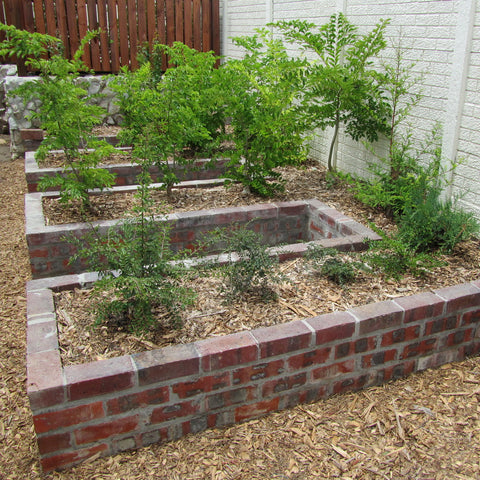
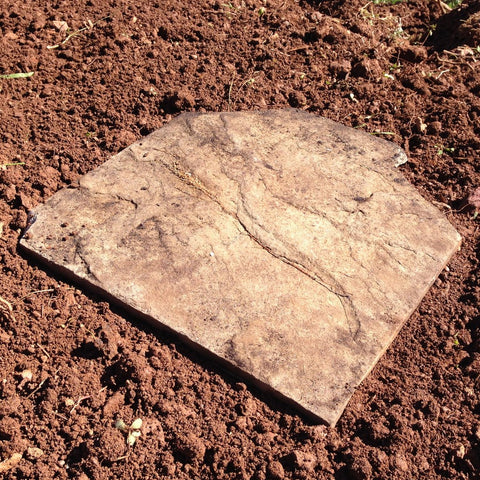

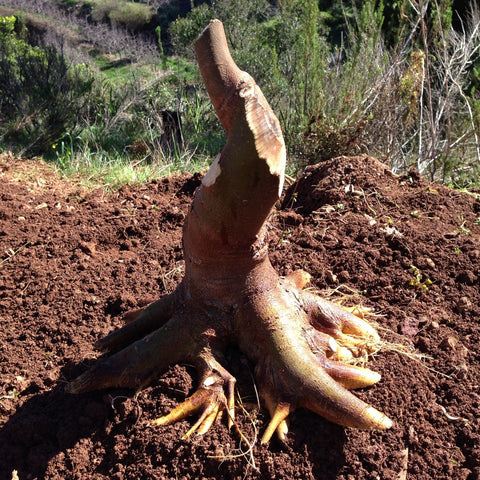
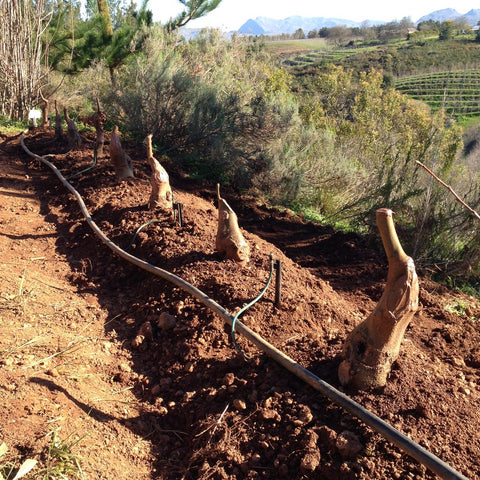
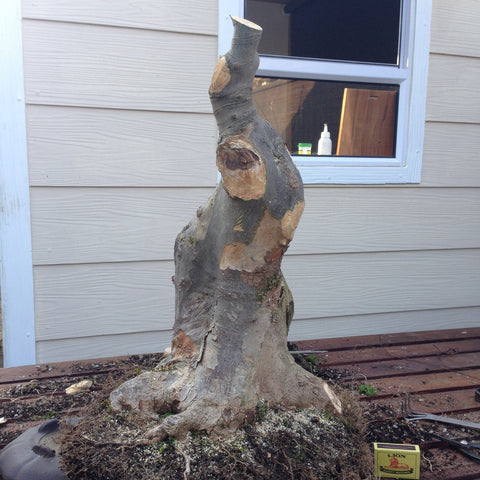
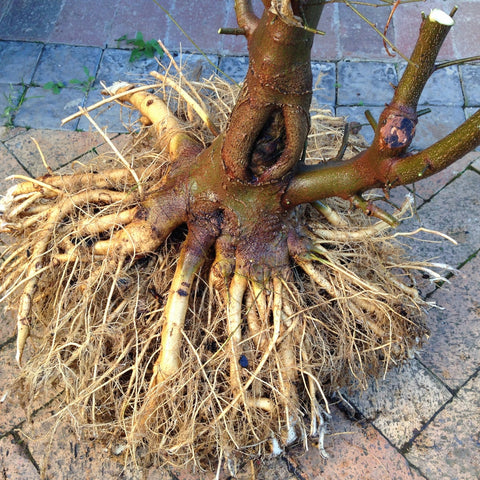

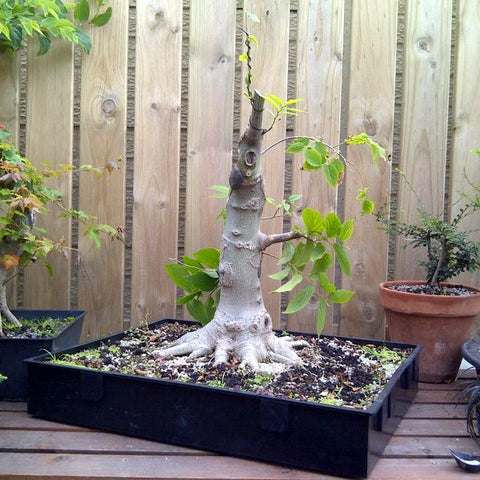
Terry Erasmus
March 04, 2018
Hi Lee, thanks for the comment. I am hesitant to make statements or claims which I cannot substantiate as I have not had experience. I have seen people placing potted trees on the ground, the roots soon growing from the container into the soil. I would say this certainly makes it easier when it comes time to lifting them as you simply need to sever the roots which are growing into the soil. Provided that you have a good growing medium in the container and you feed a lot in the container to encourage roots there, then I am sure you will be fine. I have never purposefully grown trees this way, only directly in the soil. You can still create a nice horizontal spread of roots though, simply place a board, styrene or some other flat surface below the tree when you pot it into the container. Hope this helps!